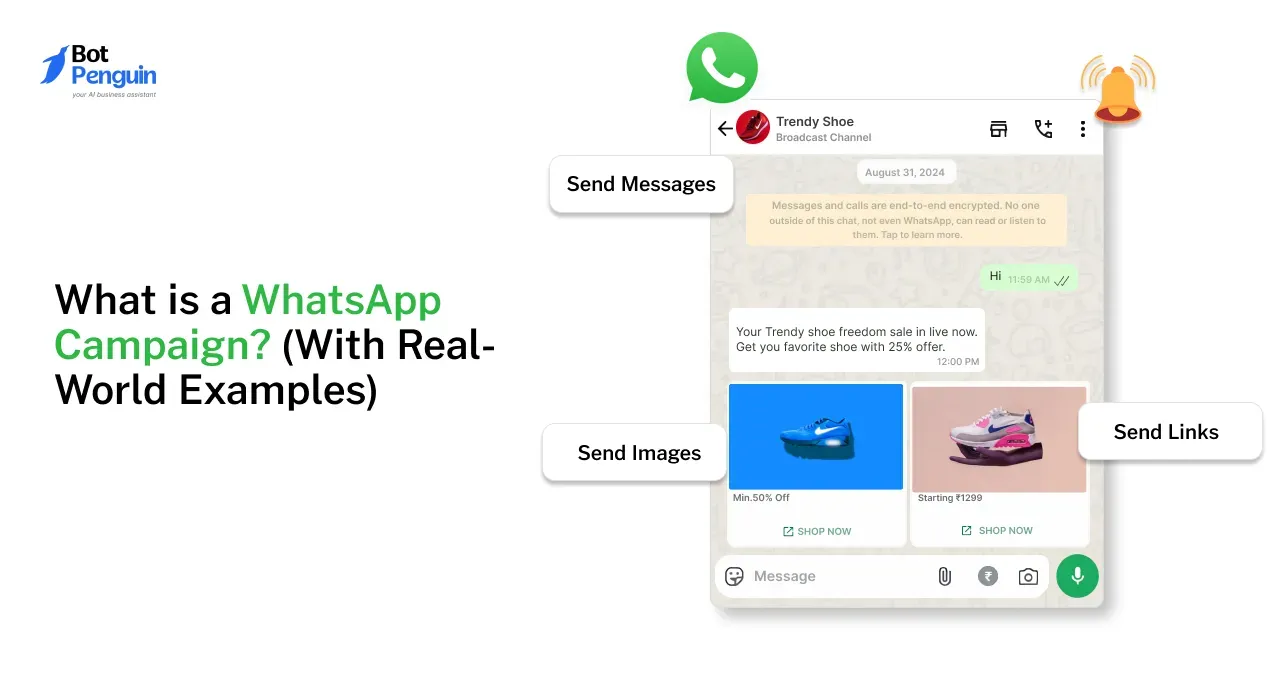Introduction
Imagine this: it’s the middle of the night, and one of your customers needs help. No problem—a friendly voice is there to answer their questions, schedule an appointment, or guide them through a process, all without anyone lifting a finger. That’s the role of voicebot development!
Whether you're a small business trying to save time or part of a larger team looking to wow customers with personalized service, voice bots have got you covered. These little conversational whizzes aren’t just about automating tasks—they’re here to change the way you do business.
Did you know that the global voicebot market is projected to reach $14.9 billion by 2026? That’s a clear sign of how businesses are embracing voicebot development to enhance customer experiences and boost efficiency. (Source: MarketsandMarkets). From voicebot development in healthcare to helping schools manage inquiries, the options are endless and exciting!
In this blog, we’re going to chat about how voicebot development can seriously up your business game. Ready to find out why adding a voice bot is like getting an all-star team member who never takes a day off? Let’s dive in!
What is a Voice Bot?
A voice bot is an advanced AI tool designed to facilitate interaction between users and systems using spoken language.
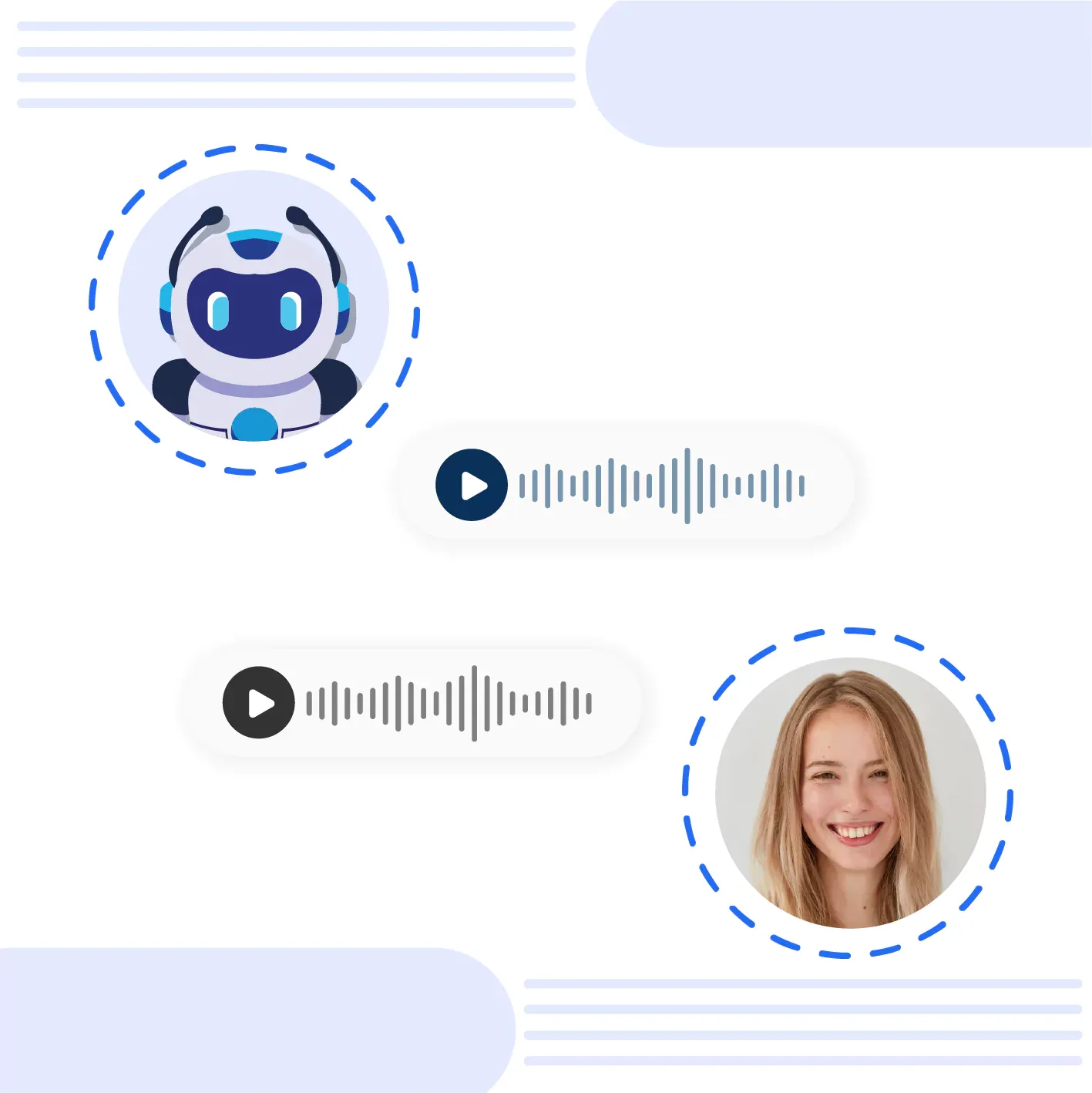
Utilizing sophisticated technologies like natural language processing (NLP) and machine learning, voice bots can understand voice commands, interpret them accurately, and provide real-time responses that mimic human conversation.
The trend of voicebot development is rapidly gaining traction, revolutionizing how businesses communicate with their customers.
From voicebot development for customer service to tailored solutions for small businesses, these intelligent systems efficiently manage inquiries, troubleshoot issues, and even assist in lead generation.
Companies are leveraging voice bots to create seamless interactions that enhance customer experience and streamline operations.
How Does VoiceBot Development Work?
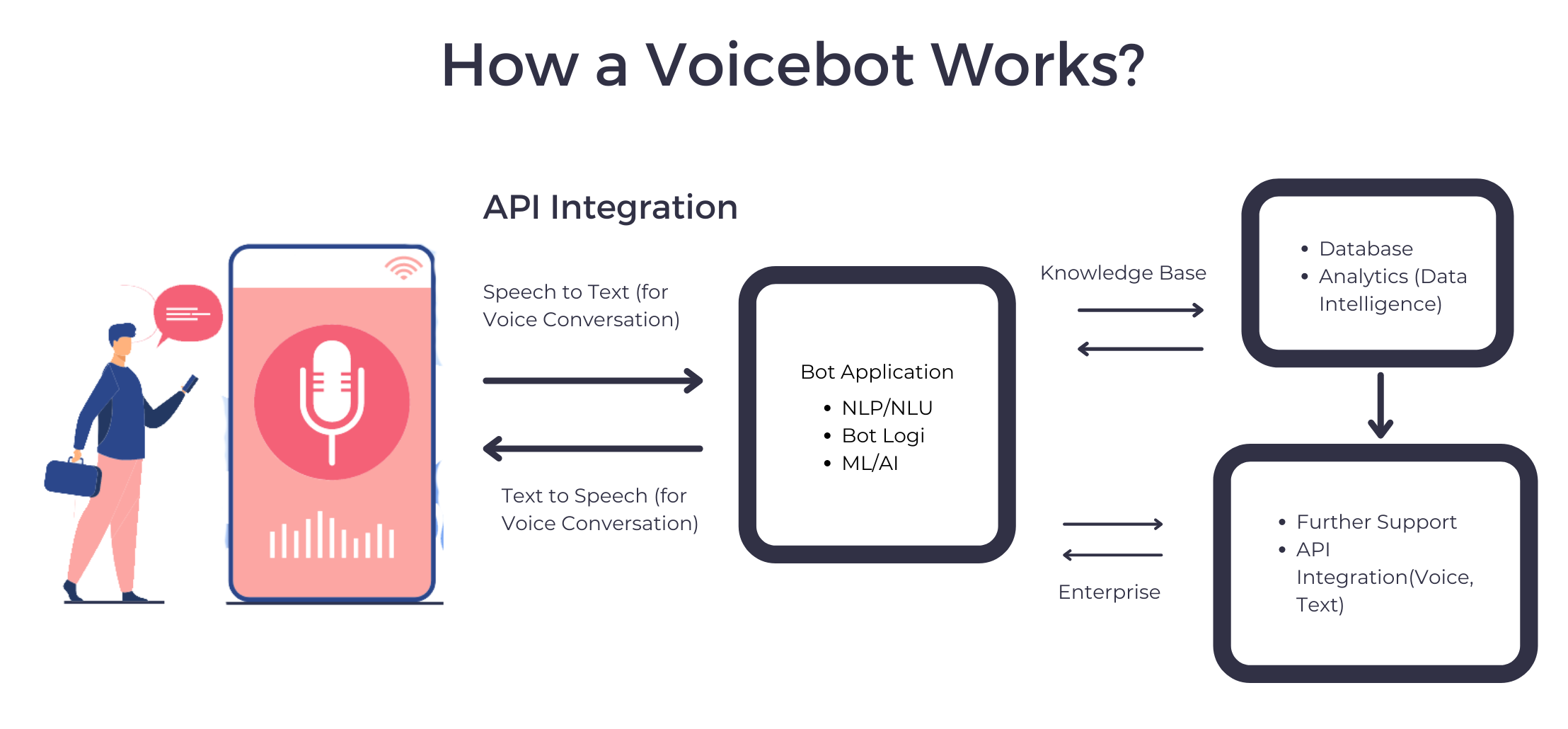
Voice bots function through several integrated steps that allow them to process spoken language and respond appropriately:
- Voice Recognition: The process begins with the voice bot identifying the user’s command through advanced speech recognition technology.
- Natural Language Processing (NLP): Once the command is recognized, the system breaks down the spoken words to understand their structure and meaning.
- Intent Analysis: The bot then analyzes the user’s intent based on the processed language to determine the best response.
- Response Generation: After identifying the intent, the voice bot generates a relevant, natural-sounding reply.
- Action Execution: Depending on the command, the bot either provides information or executes a specific task.
- Learning and Improvement: Over time, through machine learning, the voice bot refines its capabilities, enhancing accuracy and user satisfaction with each interaction.
Why is VoiceBot Development Important Today?
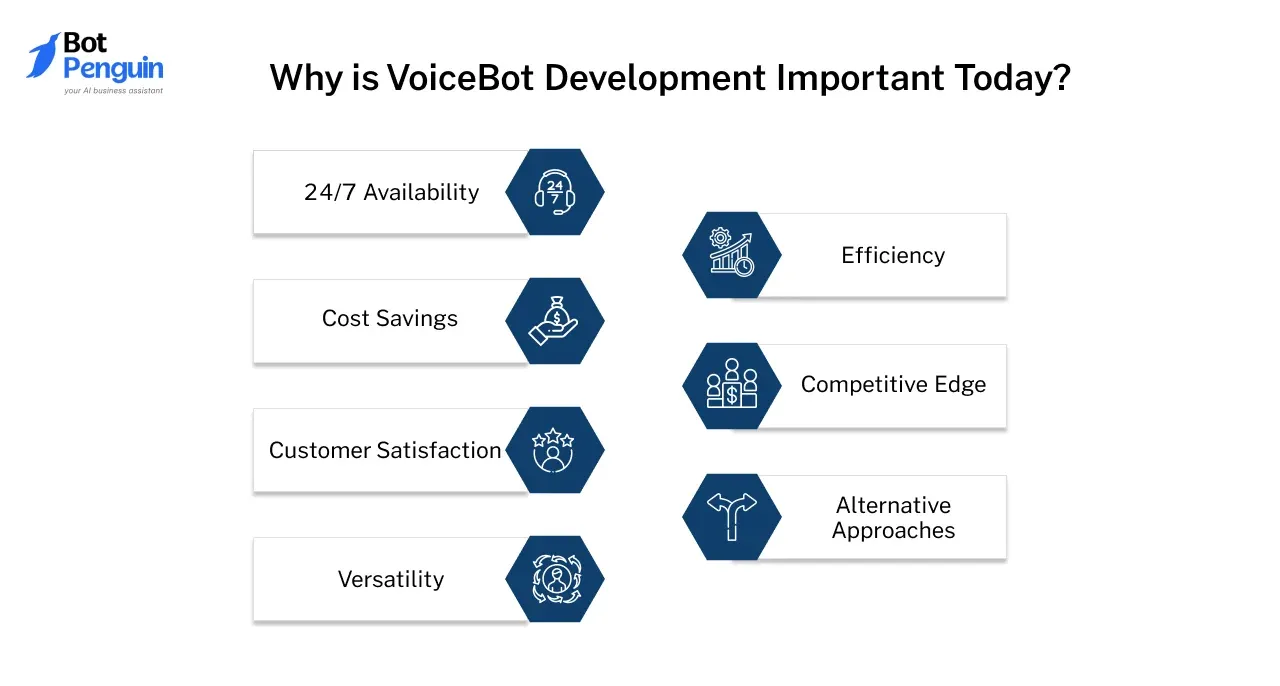
Voicebot development is becoming increasingly essential in today’s fast-paced world for several reasons:
- Efficiency: Voice bots can handle a high volume of tasks swiftly and accurately, significantly reducing the workload on human agents.
- 24/7 Availability: These intelligent assistants provide around-the-clock support, ensuring that customer inquiries are addressed at any time.
- Cost Savings: By automating repetitive inquiries, businesses can reduce the need for extensive human staff, leading to significant cost reductions.
- Customer Satisfaction: The ability to provide instant responses facilitates faster problem resolution, leading to higher customer satisfaction rates.
- Versatility: Voicebot development can be applied across various industries. For example, in healthcare, voice bots assist with appointment scheduling and patient inquiries, while in education, they can help students with course information and administrative tasks.
Voicebot development for marketing also plays a crucial role in enhancing user engagement by providing personalized recommendations and product information.
- Competitive Edge: Companies embracing voicebot development often outperform competitors by offering modern, interactive customer experiences that resonate with tech-savvy consumers.
- Alternative Approaches: Businesses can explore numerous voicebot development alternative approaches that can be tailored to their unique needs, allowing for a highly customizable solution.
Real-World Example
A notable example of effective voicebot development is Domino's Pizza. Their voice bot, Domino’s AnyWare, allows customers to place orders using simple voice commands, making the process quick and efficient.
This innovative approach not only enhances customer experience but also exemplifies the versatility of voicebot development in the fast-food industry.
In summary, investing in voicebot development offers numerous benefits that can significantly enhance customer support and streamline business operations, making it a critical tool for success in today’s competitive landscape.
Key Benefits of VoiceBot Development
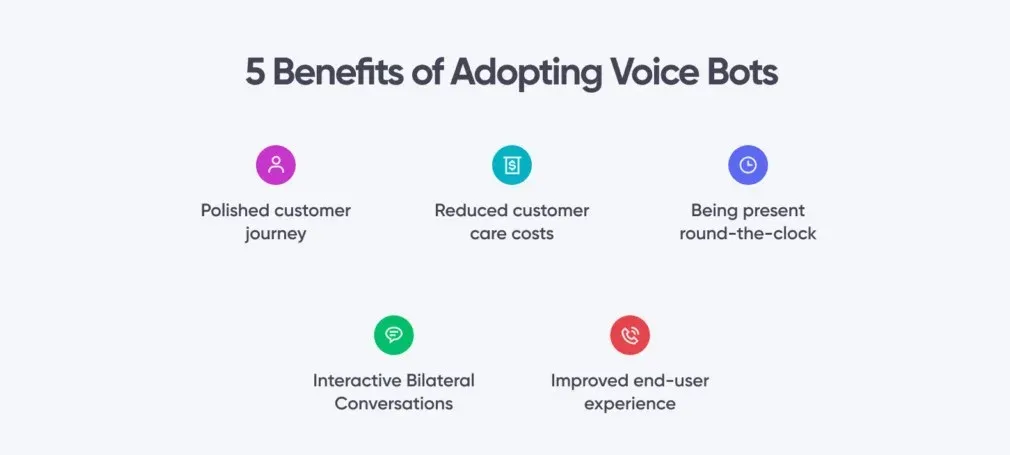
Integrating voicebot development into your business operations can revolutionize how you interact with customers.
Let's explore the key advantages of adopting voice bots and how they can transform your service offerings.
Enhanced Customer Experience
Voice bots have become indispensable tools for delivering an improved customer experience. They enable customers to interact naturally and resolve issues without the need for human intervention, which is particularly advantageous for voicebot development for small businesses.
For instance, a small retail store that implements a voice bot can efficiently handle common inquiries about product availability or store hours, thereby freeing up staff to focus on more complex customer needs.
24/7 Availability
One of the most significant advantages of voice bots is their ability to provide support around the clock. Unlike human agents, who are limited to specific hours, voice bots can respond to customer inquiries at any time—day or night.
For example, a healthcare provider can use a voice bot to assist patients with scheduling appointments or accessing health information, ensuring that support is always available, even during off-hours or holidays. This continuous availability greatly enhances customer satisfaction and trust in the brand.
Natural Language Understanding
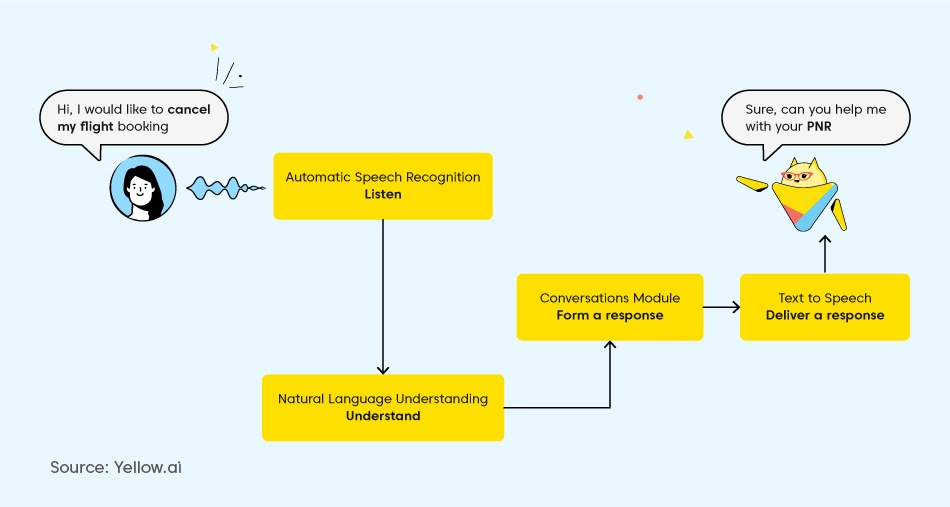
Modern voice bots utilize advanced natural language understanding (NLU), enabling them to accurately interpret and respond to human speech.
This capability is essential for voicebot development for customer service, where intuitive interactions create a more engaging and human-like experience.
For example, a travel agency might implement a voice bot that allows customers to book flights by simply describing their desired itinerary, making the process seamless and user-friendly.
Personalized Interactions
Voice bots excel at delivering personalized experiences by gathering data from previous customer interactions. They can remember customer preferences, past purchases, and even personal details, allowing businesses to tailor their responses effectively.
For instance, a fashion retailer could leverage voicebot development for marketing to provide personalized recommendations based on a customer's previous shopping history, making customers feel understood and valued, thus fostering loyalty.
Improved Customer Satisfaction
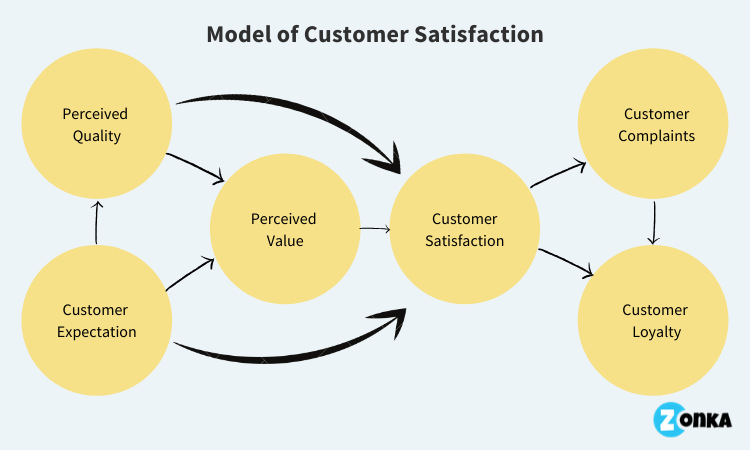
All these features contribute to significantly higher customer satisfaction levels. Faster response times, tailored interactions, and 24/7 availability mean customers receive the support they need promptly.
Businesses leveraging voice bots can expect increased customer retention, as satisfied customers are more likely to return and recommend services to others.
Increased Efficiency and Productivity
Businesses that invest in voicebot development are not only enhancing customer interactions but also improving internal productivity.
By automating routine tasks, voice bots free up valuable time for human employees, allowing them to focus on more complex, strategic activities.
Automation of Routine Tasks
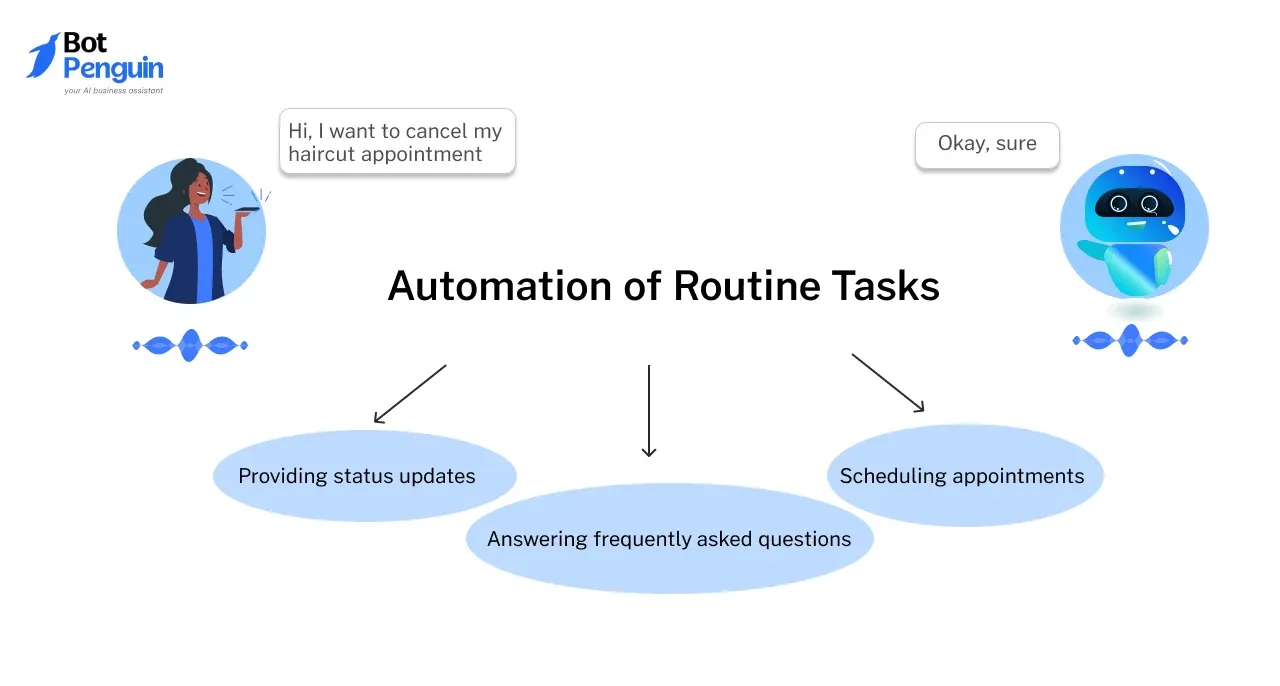
Voice bots are adept at managing routine and repetitive tasks, such as answering frequently asked questions, providing status updates, or scheduling appointments.
For example, in voicebot development for education, schools can implement voice bots to automate inquiries about class schedules and deadlines, ensuring students receive consistent and immediate responses.
Reduced Operational Costs
Automating tasks traditionally requiring human input allows businesses to significantly reduce operational costs.
By minimizing the need for extensive customer support teams to handle basic inquiries, resources can be allocated more efficiently. This is particularly beneficial in voicebot development for small businesses, where budget constraints often limit staffing capabilities.
Faster Response Times
In today’s fast-paced environment, customers expect immediate responses. Voice bots can process and respond to multiple queries simultaneously, dramatically reducing wait times.
For instance, in voicebot development for healthcare, quick access to information can be critical for patients needing immediate answers to medical inquiries.
Suggested Reading:
Top 10 Voicebots that make technology more inclusive
Improved Employee Productivity
By handling routine inquiries, voice bots allow employees to concentrate on higher-value tasks, leading to improved productivity and job satisfaction.
Employees can engage in more meaningful work, such as resolving complex customer issues or driving strategic initiatives, while voice bots manage the day-to-day inquiries.
Benefits for People with Disabilities
For individuals with physical disabilities, such as impaired mobility or vision, voice bots offer a user-friendly way to access services.
Instead of relying on typing or navigating complex websites, users can simply voice their requests. This functionality is particularly beneficial in voicebot development for healthcare, allowing patients to schedule appointments or check medical information without needing to use a computer.
Language Barriers

Voice bots can support multiple languages, allowing businesses to serve diverse customer bases. This multilingual capability helps bridge communication gaps, ensuring that non-native speakers can easily access services.
For instance, voicebot development for education can help students from various linguistic backgrounds access learning materials more efficiently.
Accessibility in Remote Areas
Voice bots also extend services to remote areas where access to traditional resources may be limited. With reliable internet connectivity, individuals can access essential services through voice interactions, reducing the need for physical visits.
This benefit is crucial in voicebot development for healthcare, where timely information can be vital in rural communities.
Building Trust and Loyalty
Voice bots consistently deliver high-quality service, which helps build customer trust.
By promptly responding to inquiries and efficiently resolving issues, businesses demonstrate their commitment to customer care. This reliability fosters loyalty, with customers returning for the dependable service they expect.
Strengthening Customer Relationships
By offering personalized and efficient service, voice bots help cultivate strong relationships between businesses and their customers.
The ability to provide tailored recommendations, immediate solutions, and round-the-clock support ensures that customers feel valued and heard. This enhanced engagement is vital for sustaining growth in today’s competitive market.
Suggested Reading:
Voicebot vs. Chatbot: Which Bot should you choose?
Best Practices for VoiceBot Development
When embarking on voicebot development, following best practices is crucial for creating a smooth and user-friendly experience.
By considering essential factors such as platform selection, interface design, and continuous learning, businesses can optimize their voice bots' performance.
Whether your focus is on voicebot development for customer service, healthcare, or education, adhering to these best practices will ensure your voicebot delivers outstanding results.
Choosing the Right Platform
Selecting the appropriate platform is the cornerstone of effective voicebot development. The chosen platform should align with your business goals and cater to your target audience.
Some platforms offer built-in tools and integrations that simplify the development process, while others provide greater customization and flexibility.
For example, when engaging in voicebot development for small businesses, it's vital to choose a platform that strikes a balance between cost and functionality.
Real-World Use Case: A local coffee shop might select a platform that integrates seamlessly with its existing point-of-sale system, enabling the voice bot to take orders and provide information about menu items effortlessly.
Designing Effective Voice User Interfaces
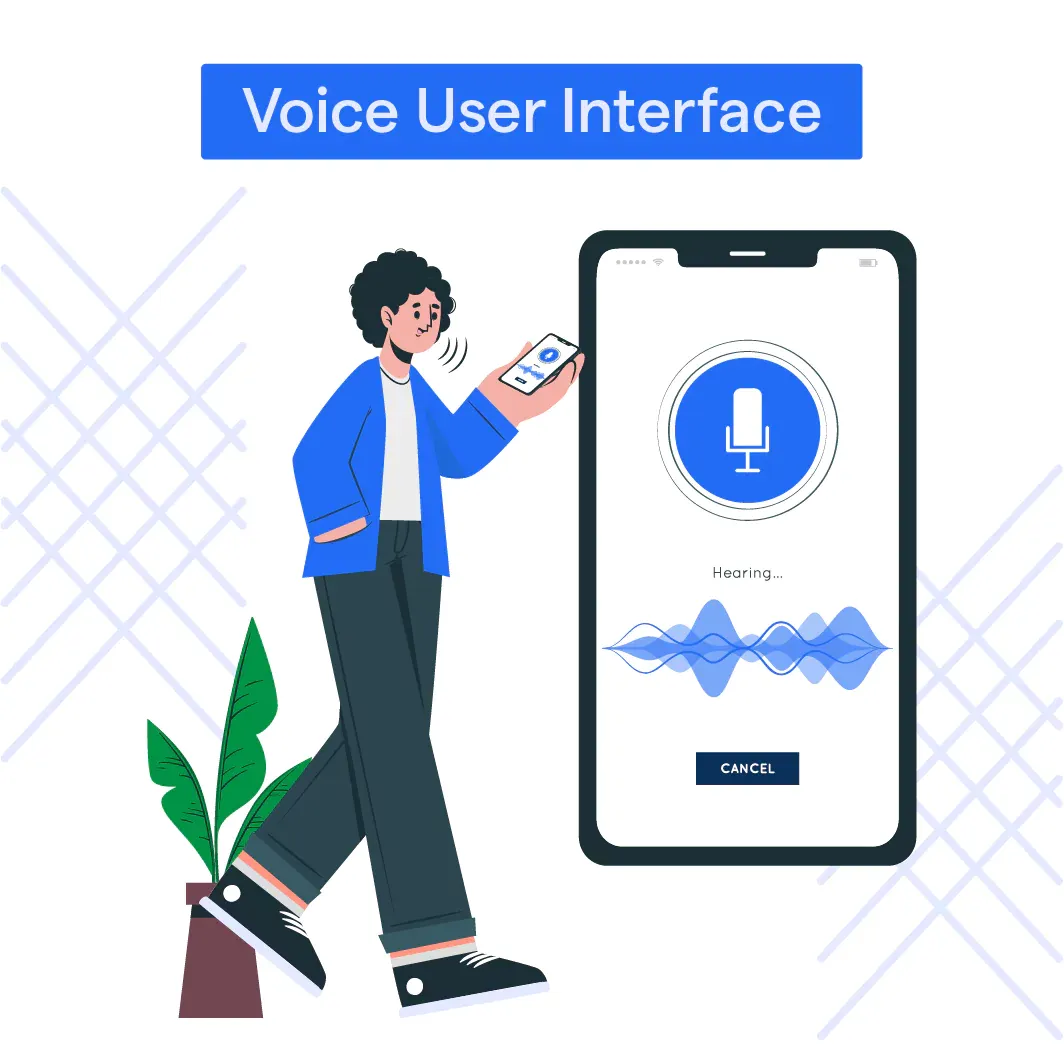
User experience is paramount for the success of any voice bot. Creating an intuitive and responsive voice user interface (VUI) ensures that interactions feel natural for users.
Focus on simplifying the user's journey by keeping commands clear and concise. For instance, voicebot development for beginners should emphasize straightforward and predictable responses to minimize user confusion. Testing the VUI with real users is essential to pinpoint areas needing improvement.
The design should guide users smoothly from one step to the next while avoiding overly complex or ambiguous prompts.
Real-World Use Case: A language learning app might implement a VUI that allows users to practice pronunciation by asking simple questions. This streamlined approach ensures learners can engage without feeling overwhelmed.
Training the Voice Bot
A well-trained voice bot is essential for providing accurate and helpful responses, directly impacting user satisfaction. The training process begins by supplying the bot with relevant data and use cases, enabling it to handle real-world interactions effectively.
Whether concentrating on voicebot development for healthcare, education, or other sectors, continuous training with new data is vital to keeping the bot’s responses relevant.
Utilizing machine learning algorithms can enhance the voice bot’s accuracy over time, but initial training should encompass a broad spectrum of potential user interactions.
Continuous Improvement and Maintenance
Voice bots are not "set-and-forget" tools; they require regular updates and improvements to remain effective and responsive.
Ongoing maintenance involves analyzing customer interactions and identifying areas where the bot may be underperforming. This continuous improvement process ensures that the voice bot evolves with changing customer needs and dynamic business goals.
Businesses that explore voicebot development alternative approaches often discover new strategies to enhance the bot’s performance, ensuring it remains a valuable asset over time.
Conclusion
In conclusion, embracing voicebot development is a transformative step for businesses seeking to enhance customer interactions and streamline operations.
By integrating voice bots, companies can provide exceptional customer experiences with 24/7 availability, personalized responses, and quick resolutions to inquiries.
The ability of voice bots to understand natural language and learn from interactions ensures that they continually improve, making them invaluable assets across various industries.
As we've explored, implementing best practices in voicebot development—from selecting the right platform to designing effective user interfaces and maintaining ongoing improvements—will set your business apart in today’s competitive landscape.
Whether you’re focusing on voicebot development for customer service, healthcare, or education, the advantages are clear.
As more businesses recognize the potential of voicebot development, those who leverage this technology will not only meet but exceed customer expectations, ultimately driving growth and fostering loyalty in an increasingly digital world.
Frequently Asked Questions (FAQs)
What are the key benefits of voice bot development for businesses?
Voicebot development offers numerous advantages for businesses, including 24/7 customer support, reduced operational costs, and the automation of repetitive tasks.
These voice bots enhance customer satisfaction by providing quick, personalized interactions and improving overall efficiency. Moreover, they are highly scalable, making them suitable for various industries such as healthcare, education, and marketing.
How can voice bot development improve customer service?
Voicebot development significantly enhances customer service by handling common inquiries instantly, thereby reducing wait times.
These voice bots provide personalized responses and automate routine tasks, allowing human agents to focus on more complex issues. As a result, businesses can achieve faster problem resolution and an overall enhanced customer experience.
Is voice bot development suitable for small businesses?
Absolutely! Voicebot development is particularly beneficial for small businesses. It helps reduce staffing costs while offering 24/7 availability.
By automating repetitive customer service tasks, small businesses can deliver consistent and efficient service without the need for extensive resources.
How does voice bot development support healthcare services?
In the healthcare sector, voicebot development automates appointment scheduling, answers patient inquiries, and provides essential health information.
These voice bots enhance accessibility, alleviate the workload of healthcare staff, and ensure that patients receive timely assistance, even outside regular working hours.
What industries can benefit from voice bot development?
Voicebot development is advantageous across various industries, including customer service, healthcare, education, marketing, and small businesses.
Their ability to automate interactions, boost efficiency, and deliver personalized experiences makes voice bots adaptable to different business needs.
What are the cost-saving advantages of voice bot development?
Voicebot development leads to significant cost savings by automating customer interactions and handling repetitive tasks. This reduces the need for a large customer support team, thereby saving on labor costs. Additionally, since voice bots operate 24/7, businesses can improve their service without incurring extra staffing or overtime expenses.

